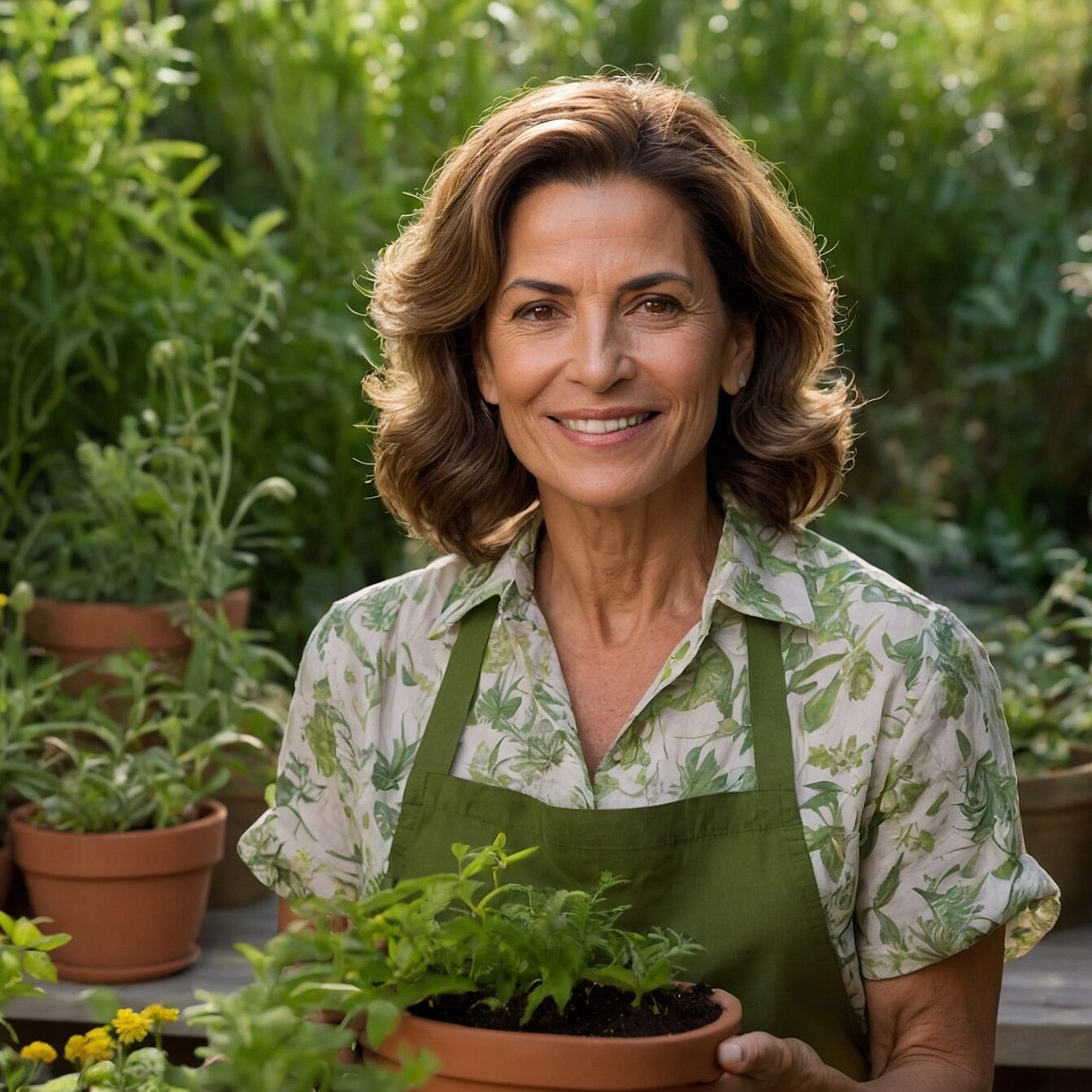Table of Contents
Introduction
Growing plants at home has many benefits, both aesthetically and for air quality. Among the popular options, the Dwarf Jade Plant (Crassula ovata) stands out for its resilience and beauty. In this introduction, we’ll explore the characteristics of this charming plant, the importance of propagating it and offer an overview of the essential tips for raising Dwarf Jade Plant seedlings.
The Dwarf Jade Plant, also known as the friendship tree or money plant, is a succulent that enchants with its robust appearance and fleshy leaves. Originally from South Africa, it is appreciated all over the world as an ornamental plant. Its oval, bright green leaves and woody trunk give it a unique charm that adapts well to both indoor and outdoor environments.
Propagating the Dwarf Jade Plant is not only a way of expanding your plant collection, but also an effective method of maintaining the health and vitality of the mother plant. By creating cuttings, you can renew and revitalize old plants and share this natural beauty with friends and family. Propagation also allows you to experiment with different locations and growing conditions, ensuring that you always have a healthy, lush Dwarf Jade Plant.
Tips at a glance
To help you start propagating your Dwarf Jade Plant, we’ve prepared 5 practical tips that cover the entire process, from selecting the right branch to post-planting care. These tips are:
- Choose the Right Time – Learn about the best time of year and ideal conditions to start propagating.
- Select a Healthy Branch – Learn how to identify and choose a suitable branch for the seedling.
- Cut the Branch Correctly – Understand the step-by-step process for cutting without damaging the mother plant.
- Let the Branch Heal – Discover the importance of the healing period and how to do it correctly.
- Plant and Care for the Sapling – Receive guidance on planting the healed branch and the care needed to ensure the success of the sapling.
With these tips, you’ll be ready to create your own Dwarf Jade Plant seedlings and enjoy all the benefits this wonderful plant can offer. Let’s start this green journey together!
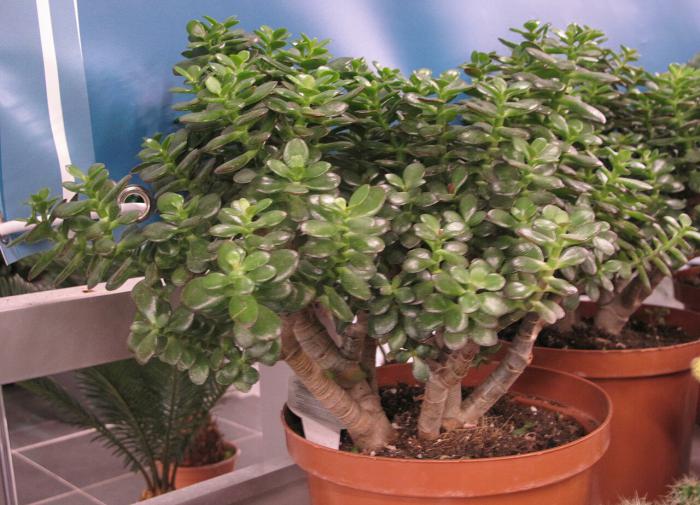
Get to know the Dwarf Jade Plant
The Dwarf Jade Plant, scientifically known as Crassula ovata, is a succulent plant that wins admirers for its beauty and practicality. In this section, we’ll explore in detail the characteristics and benefits of growing this enchanting plant.
Description of the Dwarf Jade Plant
Dwarf Jade Plant is a small to medium-sized succulent that usually reaches a maximum height of 30 to 50 centimeters when grown in pots. It has a woody, branched trunk, which becomes more prominent over time. Its leaves are fleshy, oval and shiny, deep green, with an appearance reminiscent of small coins.
Main characteristics
- Size: Usually grows to between 30 and 50 centimeters tall.
- Leaf shape: Oval, fleshy and shiny, with an intense green color.
- Flowers: The Dwarf Jade Plant produces small star-shaped flowers, which can appear during the summer under ideal growing conditions. The flowers are usually white or pink and grow in inflorescences.
Benefits of growing Dwarf Jade Plant
Growing Dwarf Jade Plant offers a number of benefits that go beyond its ornamental beauty:
- Decoration: With its compact shape and vibrant leaves, the Dwarf Jade Plant is a charming addition to any environment. It is often used in succulent arrangements and rock gardens, as well as being an excellent indoor plant.
- Ease of Care: The Dwarf Jade Plant is a low-maintenance plant, making it ideal for gardening beginners. It tolerates a lack of water well and can survive in a variety of light conditions, from direct sunlight to indoors with artificial lighting.
- Air purification: Like other succulents, Dwarf Jade Plant contributes to air purification by removing toxic substances and increasing oxygen levels in the environment.
With its unique characteristics and practical benefits, Dwarf Jade Plant stands out as a popular choice for those looking for a beautiful, easy-care plant.
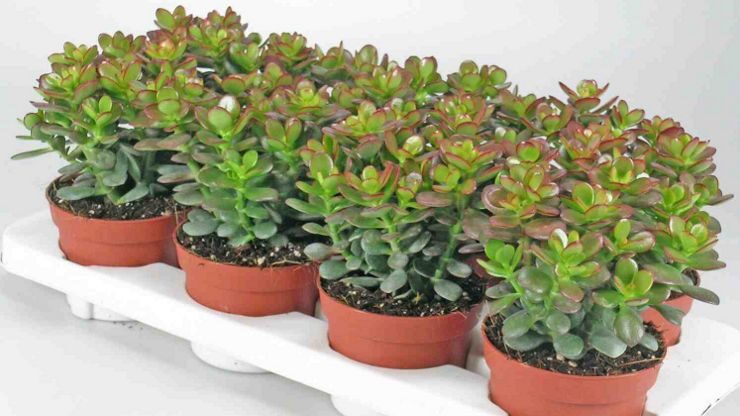
Tip 1: Choose the right time
Choosing the right time to take Dwarf Jade Plant cuttings is crucial to successful propagation. In this section, we’ll explore the best time of year, the ideal climatic conditions and the signs that indicate that the mother plant is ready for propagation.
Best Time of Year to Take Cuttings
The Dwarf Jade Plant is most receptive to propagation during spring and summer, when temperatures are warmer and days are longer. During these seasons, the plant is in its active growth period, which increases the chances of successful propagation. Avoid making cuttings during the colder winter months, as the plant may be resting and take longer to recover from the cut.
Ideal climatic conditions
When making Dwarf Jade Plant cuttings, it is important to ensure suitable climatic conditions to stimulate rooting and healthy growth. Look for sunny days and avoid periods of heavy rain, as excess moisture can increase the risk of the cut branch rotting. Also, keep the room temperature stable, between 20°C and 30°C, to provide a favorable environment for the roots to develop.
Signs that the Mother Plant is Ready for Propagation
Before making cuttings, observe the mother plant for signs that indicate its readiness for propagation. Some indicators include:
- Active Growth: The mother plant should be showing healthy growth, with new, vigorous leaves.
- Mature branches: Choose branches that are firm and mature, avoiding those that are damaged or weak.
- Absence of Stress: Avoid making seedlings from a plant that is experiencing stress, such as water deficiency or excess fertilizer. Wait until the plant is healthy and vigorous to increase the chances of successful propagation.
By choosing the right time to take Dwarf Jade Plant cuttings and carefully observing the signs of the mother plant, you will be prepared to start the propagation process successfully.
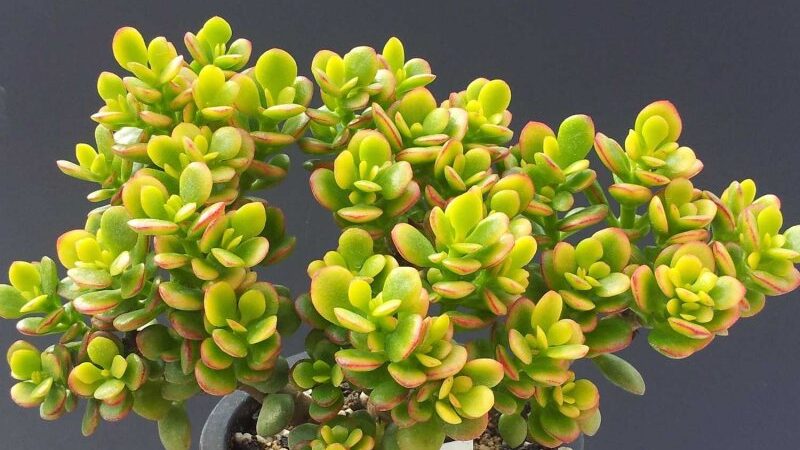
Tip 2: Select a Healthy Branch
Selecting a healthy branch is fundamental to the success of propagating Dwarf Jade Plant. In this section, we’ll discuss how to identify a suitable branch, the importance of choosing a healthy and disease-free branch, and the ideal branch size for propagation.
How to Identify a Suitable Branch for Cuttings
When selecting a branch for a Dwarf Jade Plant seedling, look for those that meet the following criteria:
- Firmness: The branch should be firm and healthy, with no signs of wilting or sagging.
- Color: Prefer branches with a vibrant, uniform green color, indicating vigor and good health.
- Absence of Damage: Avoid branches with cuts, bruises or visible diseases, such as dark spots or signs of rot.
The importance of choosing a healthy, disease-free branch
Choosing a healthy, disease-free branch is essential to ensure the successful propagation of Dwarf Jade Plant. Sick or damaged branches are less likely to root and can transmit diseases to the growing seedlings. In addition, a healthy branch is more resistant to the stress of cutting and has a greater capacity to regenerate and develop new roots.
Ideal branch size for propagation
The ideal size of branch for propagating Dwarf Jade Plant can vary, but it is generally recommended to choose branches that are between 5 and 10 centimeters long. Branches that are too short may have difficulty developing enough roots to support the plant, while branches that are too long may be more susceptible to damage during handling and transportation. Opt for branches that have at least 2 pairs of leaves, as this increases the chances of successful propagation.
By following these guidelines to select a healthy branch of the right size, you will be taking an important step towards successfully propagating your Dwarf Jade Plant.
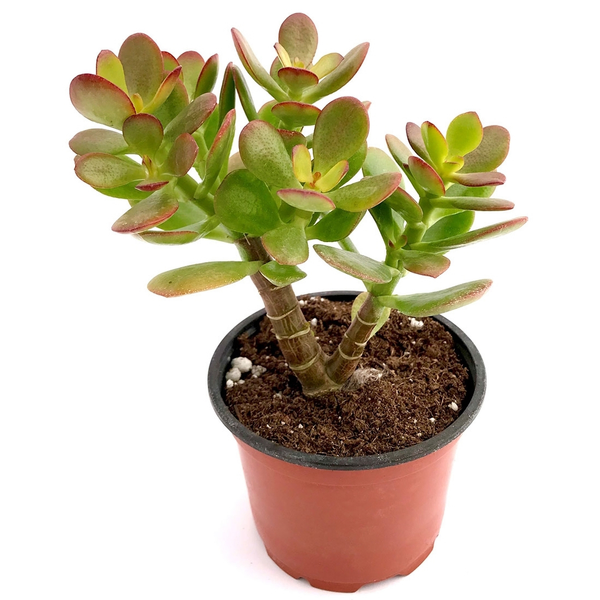
Tip 3: Cut the Branch Correctly
Proper cutting is crucial for successful Dwarf Jade Plant propagation. In this section, we’ll cover the tools needed for cutting, the step-by-step procedure and the precautions to be taken to avoid damaging the mother plant.
Tools needed for cutting
When cutting the Dwarf Jade Plant branch, it is important to use sharp, clean tools to ensure a precise cut and reduce the risk of infection. Some tools that can be used include
- Pruning shears: Ideal for cutting medium-sized branches.
- Sharp knives: Great for cutting thicker branches.
- Stiletto or grafting knife: Used for delicate, precise cuts.
Make sure to clean the tools with alcohol before use to reduce the risk of contamination.
Step-by-step procedure for cutting the branch
Follow this step-by-step procedure to cut the Dwarf Jade Plant branch:
- Choose the branch: Select a healthy, mature branch, preferably at least 5 centimeters long.
- Position thetool: Position the cutting tool about 1 centimeter above a knot or between two pairs of leaves.
- Make thecut: Make a clean, sloping cut into the branch, avoiding crushing or tearing.
- Remove the lower leaves: Remove the lower leaves from the branch to create a space for rooting.
Care to be Taken During Cutting to Avoid Damage to the Mother Plant
During the cutting process, it is important to take some precautions to avoid damaging the mother plant:
- Choose the right place: Choose a spot on the mother plant where the cut will not damage its shape or structure.
- Cut carefully: Make the cut quickly and precisely to minimize stress on the mother plant.
- Use sharp tools: Use sharp tools to prevent the cut from causing unnecessary damage to the plant.
By following these guidelines for cutting the branch correctly, you will be prepared to start the Dwarf Jade Plant propagation process safely and effectively.
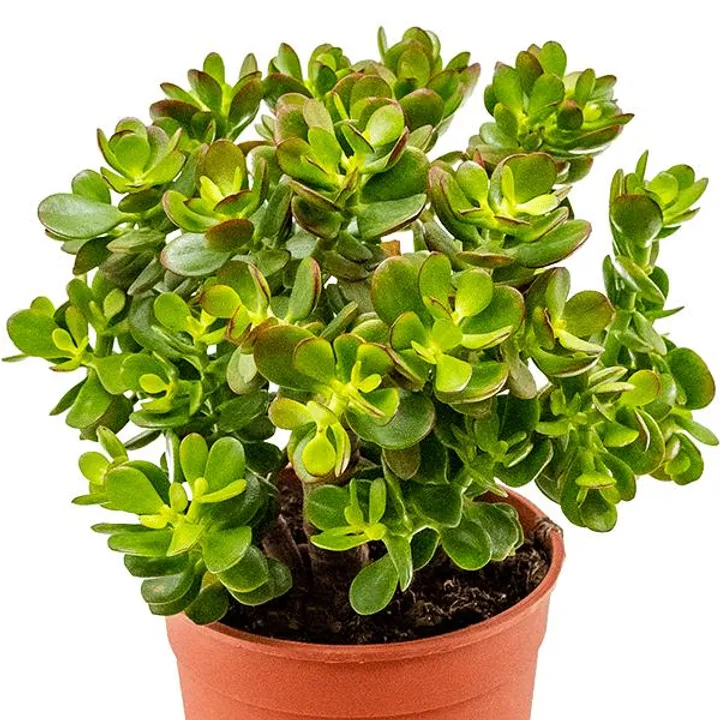
Tip 4: Let the branch heal
Allowing the branch to heal properly before planting it is crucial to the success of propagating Dwarf Jade Plant. In this section, we will discuss the importance of this process, the recommended time for healing and the ideal environment to promote effective healing.
Importance of Allowing the Twig to Dry Before Planting
Allowing the branch to heal before planting it is essential to prevent infection and promote healthy root development. When a branch is cut, it is exposed to bacteria, fungi and other pathogens that can infect the plant. Allowing the branch to heal helps to form a natural protective barrier, reducing the risk of infection and increasing the chances of successful propagation.
Recommended healing time
The time needed for the branch to heal can vary depending on environmental conditions and the species of plant. In the case of Dwarf Jade Plant, it is recommended to let the branch heal for at least 2 to 3 days before planting it in the ground. During this time, the cut wound should dry out and form a protective film before the branch is exposed to soil and moisture.
Ideal environment for healing
To promote effective healing, it is important to provide the branch with a suitable environment, with the following conditions:
- Temperature: Keep the branch in a place with a stable temperature, between 20°C and 25°C. Temperatures that are too low can slow down the healing process, while temperatures that are too high can increase the risk of dehydration.
- Humidity: Avoid very humid environments, as this can increase the risk of the branch rotting. Moderate humidity is ideal for promoting healing without causing additional damage to the plant.
Also, make sure you position the branch in a place with good air circulation to avoid moisture accumulating around the cut wound.
By allowing the branch to heal properly before planting it, you will be preparing it for healthy and vigorous growth, increasing the chances of successfully propagating the Dwarf Jade Plant.
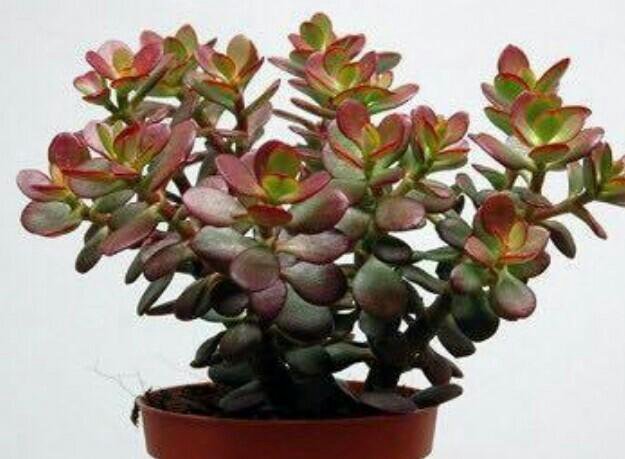
Tip 5: Plant and Care for the Cuttings
Now that the branch has healed, it’s time to plant it and take care of your Dwarf Jade Plant seedling to ensure healthy growth. In this section, we’ll cover the preparation of suitable soil, the procedure for planting the healed branch in the ground and initial care, including watering and exposure to the sun.
Preparing the right soil
The choice of soil is crucial for the healthy development of the Dwarf Jade Plant seedling. Opt for a well-drained substrate, composed of a mixture of common garden soil and sand or perlite to improve drainage. Adding organic matter, such as compost or coconut shells, can also help retain moisture and provide essential nutrients for the plant.
How to Plant the Scarred Twig in the Ground
Follow these simple steps to plant the healed branch in soil:
- Prepare the pot: Choose a pot with drainage holes in the bottom and fill it with the prepared substrate.
- Make a hole: Use a pencil or finger to make a small hole in the center of the pot, deep enough to accommodate the branch.
- Plant the branch: Place the healed branch in the hole, gently pressing the soil around it to secure it in place.
- Water: After planting, gently water the soil around the branch to ensure it is well moistened.
Watering and initial care
To care for your Dwarf Jade Plant seedling after planting, follow these guidelines:
- Watering: Keep the soil slightly moist, but avoid overwatering as this can cause root rot. Water only when the soil is dry to the touch.
- Sun exposure: Place the pot in a spot with full to indirect sunlight. The Dwarf Jade Plant thrives in bright light conditions, but avoid direct exposure to intense sunlight, especially during the hottest hours of the day to avoid burning the leaves.
With proper soil preparation, careful planting and attention to initial care, your Dwarf Jade Plant seedling will have everything it needs to grow and develop successfully.
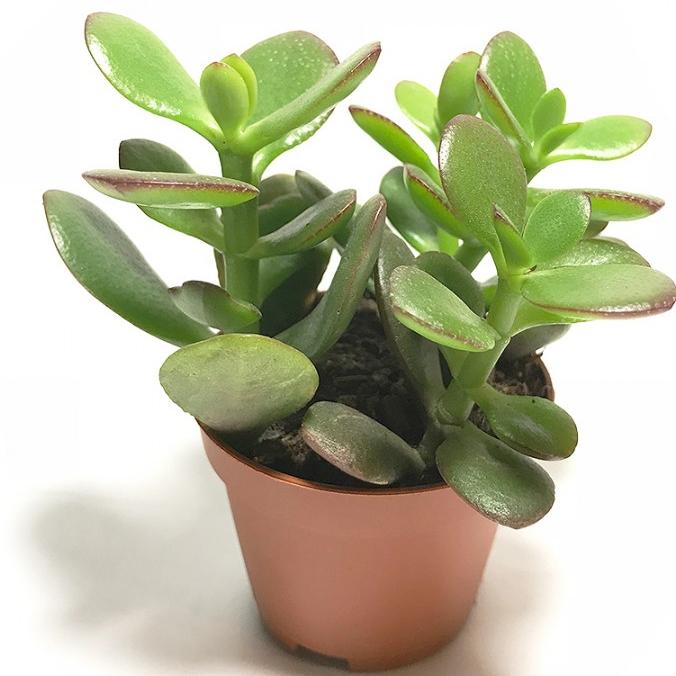
Additional Tips for Success
In addition to the main steps of propagation and initial care, there are some additional tips that can significantly contribute to the successful cultivation of your Dwarf Jade Plant seedling. In this section, we’ll cover the use of rooting hormone, monitoring the seedlings and the process of transplanting them to a larger pot when necessary.
Use of rooting hormone
The use of rooting hormone can accelerate root development and increase the chances of success in propagating Dwarf Jade Plant. Apply rooting hormone to the branch cutting before planting it in the ground, following the manufacturer’s instructions. The rooting hormone helps to stimulate root growth and reduce the time needed for rooting.
Monitoring the cuttings
It is important to regularly monitor your Dwarf Jade Plant seedlings for signs of healthy growth and possible problems. Some signs of growth include the emergence of new leaves and the development of roots visible through the bottom of the pot. Keep an eye out for any signs of yellowing leaves, wilting or rotting, which can indicate problems such as overwatering, lack of light or disease.
How to Transplant the Seedling to a Larger Pot When Necessary
When your Dwarf Jade Plant seedling grows and the roots begin to fill the initial pot, it will be necessary to transplant it into a larger pot to provide additional space for growth. Follow these steps to successfully transplant your seedling:
- Choose the new pot: Select a pot that is at least 2 to 5 centimeters larger in diameter than the current pot.
- Prepare the new pot: Fill the new pot with a suitable substrate and make a hole in the center of the soil.
- Carefully remove the seedling: Remove the seedling from the old pot, taking care not to damage the roots.
- Plant the seedling in the new pot: Place the seedling in the prepared hole in the new pot and fill in around it with fresh soil.
- Water gently: After transplanting, water the seedling gently and keep it in a place with indirect light until it gets established.
By following these additional tips, you’ll be giving your Dwarf Jade Plant seedling the best conditions to thrive and grow lush over time.
Conclusion
Throughout this article, we’ve explored in detail the process of propagating Dwarf Jade Plant, a charming and easy-to-grow succulent plant. To recap the tips covered, we highlighted the importance of choosing the right time to take cuttings, selecting healthy branches, making the cut correctly, letting the branch heal properly, planting and caring for the seedling with attention to detail.
Propagating your own Dwarf Jade Plant seedlings can be a rewarding and exciting experience. As well as expanding your plant collection, you’ll have the opportunity to closely follow the growth and development of a new green life.
We therefore encourage all our readers to try making their own Dwarf Jade Plant seedlings by following the guidelines provided in this article. Remember that practice makes perfect, and each new attempt is an opportunity to learn and grow as a gardener.
We would also like to invite you to share your experiences and stories in the comments below. We want to hear about your gardening adventures, your tips and tricks for growing succulents and any other Dwarf Jade Plant-related stories you’d like to share. Together, we can create a community of plant enthusiasts and inspire each other to grow more green in our lives.
Thanks for joining us on this green journey and see you in the next article!
Frequently Asked Questions
How to care for a jade seedling?
To care for a Jade seedling, it is essential to ensure that it receives moderate indirect sunlight, as well as the right amount of water. Water the plant only when the soil is completely dry, avoiding excess moisture which can cause the roots to rot. Use well-drained soil, preferably a mixture suitable for succulents, and keep the plant in an environment with good air circulation. The ideal temperature for Jade’s growth is between 18°C and 24°C. Fertilize the seedling once a month during spring and summer with a specific fertilizer for succulents to promote healthy growth.
How to reproduce the Jade plant?
Reproducing the Jade plant is a simple process that can be done through branch or leaf cuttings. To do this, cut a healthy branch or sturdy leaf from the mother plant, leaving the cut part to heal for a few days until it forms a protective film. After healing, plant the cutting or leaf in well-drained soil and keep it in a place with indirect light. Water lightly, only when the soil is dry. Over time, the cutting will start to take root and grow into a new Jade plant.
How do I grow jade seedlings?
To make the Jade plant seedling, choose a healthy branch approximately 5 to 10 centimeters long. Use clean pruning shears to cut the branch and leave the cut end to heal for a few days in a dry, well-ventilated place. After healing, prepare a pot with well-drained soil, make a small hole and plant the healed branch. Water moderately and keep the pot in indirect sunlight. With proper care, such as controlled watering and sufficient light, the seedling will begin to take root and grow.
